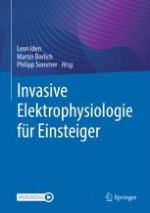2022 | OriginalPaper | Buchkapitel
8. Diagnostik und Therapie der AV-Knoten-Reentrytachykardie
verfasst von : Prof. Dr. med. Christian von Bary, Priv.-Doz. Dr. med. Charalampos Kriatselis
Erschienen in: Invasive Elektrophysiologie für Einsteiger
Verlag: Springer Berlin Heidelberg











